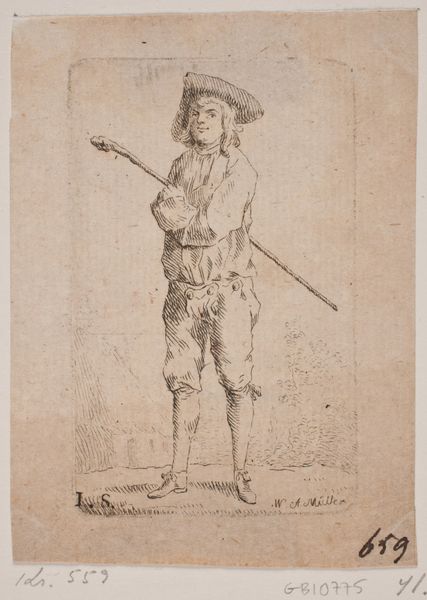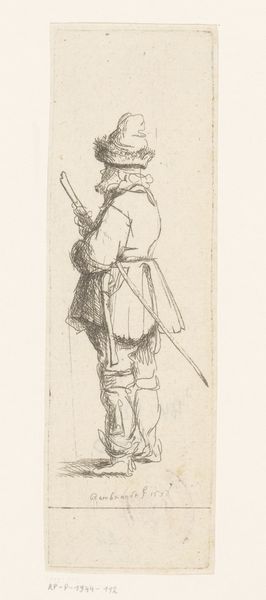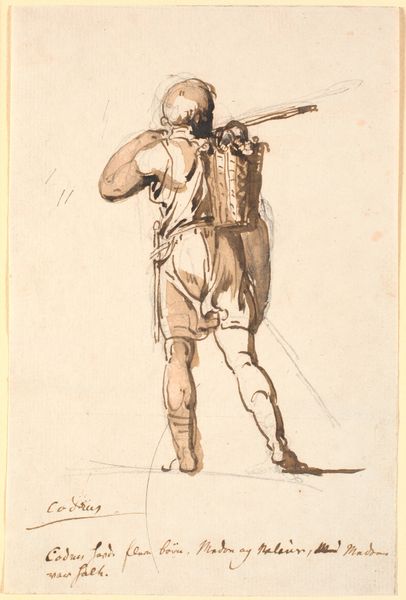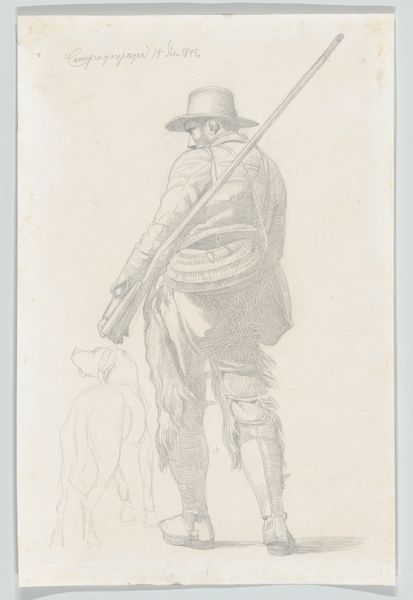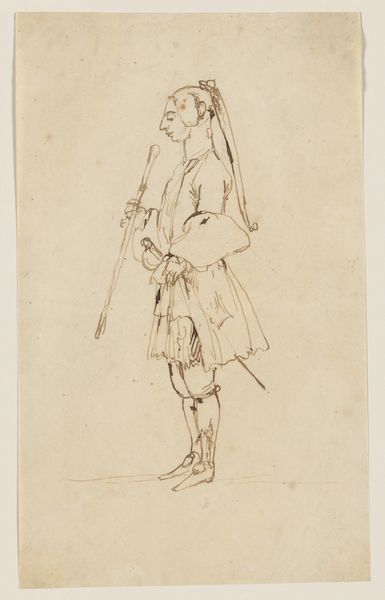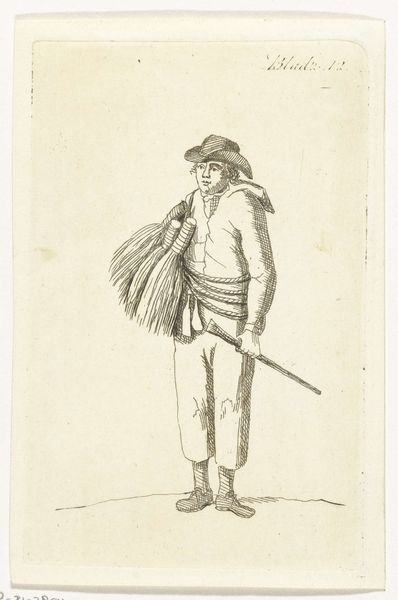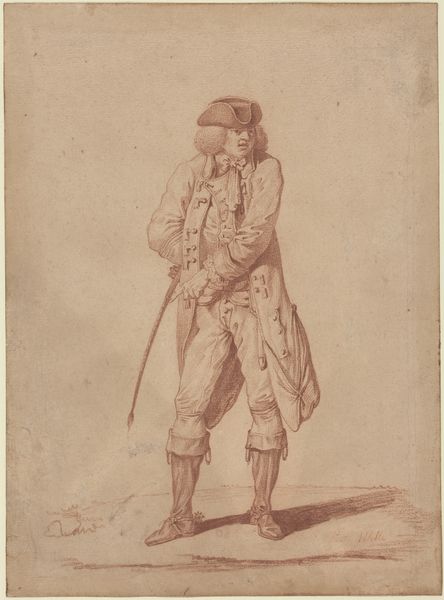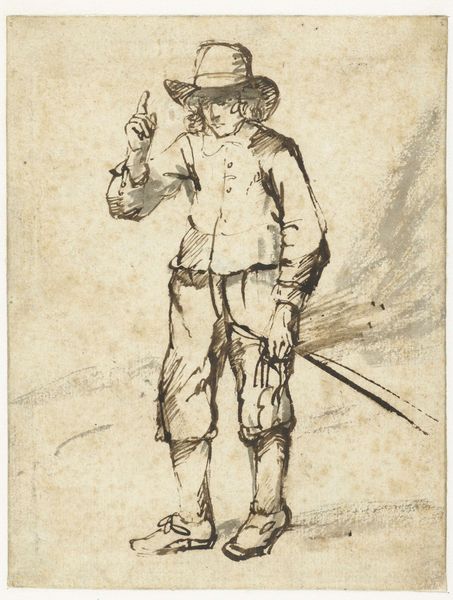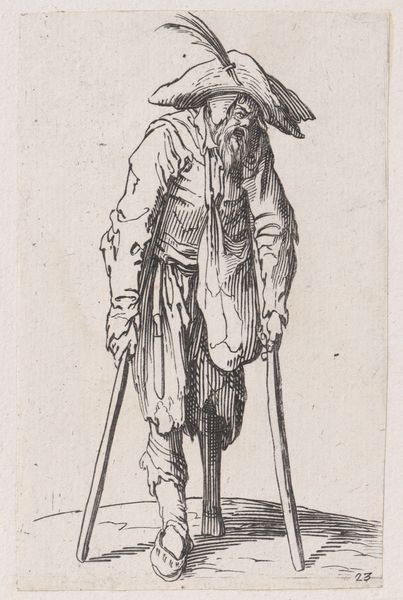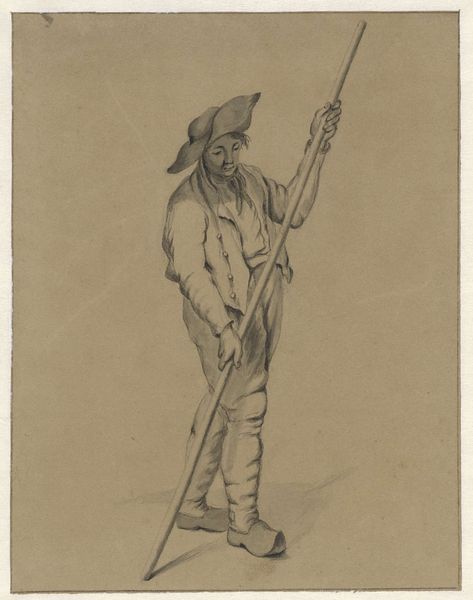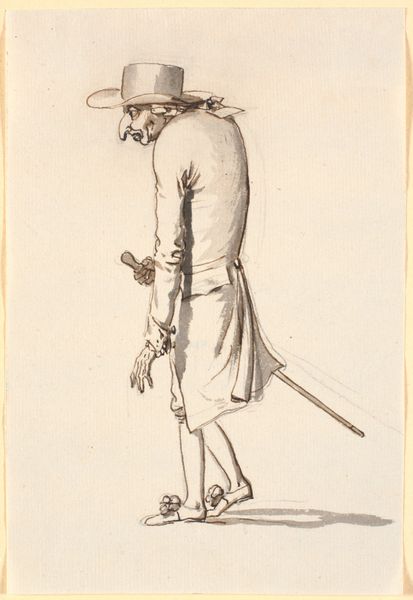
Copyright: Public Domain
Georg Melchior Kraus created this drawing of a standing man with a halberd and saber in the 18th century using watercolor and graphite. Kraus was director of the Weimar Princely Free Drawing School, an institution which promoted the aesthetic of the Enlightenment. This image reflects the rigid social hierarchies of the time. The man's upright posture and weaponry denote authority, while the artist's chosen medium of watercolor may reflect the sitter's status and the social function of the work. Kraus was known for his commitment to Neoclassicism, seen here in the emphasis on line and form, and a certain emotional restraint. Consider how the subject's stance and expression communicate not just individual identity but also the values of order, reason, and control that were prized during the Enlightenment. The drawing offers a glimpse into the visual culture of 18th-century Germany, inviting us to reflect on the power dynamics embedded within seemingly simple representations of identity.
Comments
No comments
Be the first to comment and join the conversation on the ultimate creative platform.
